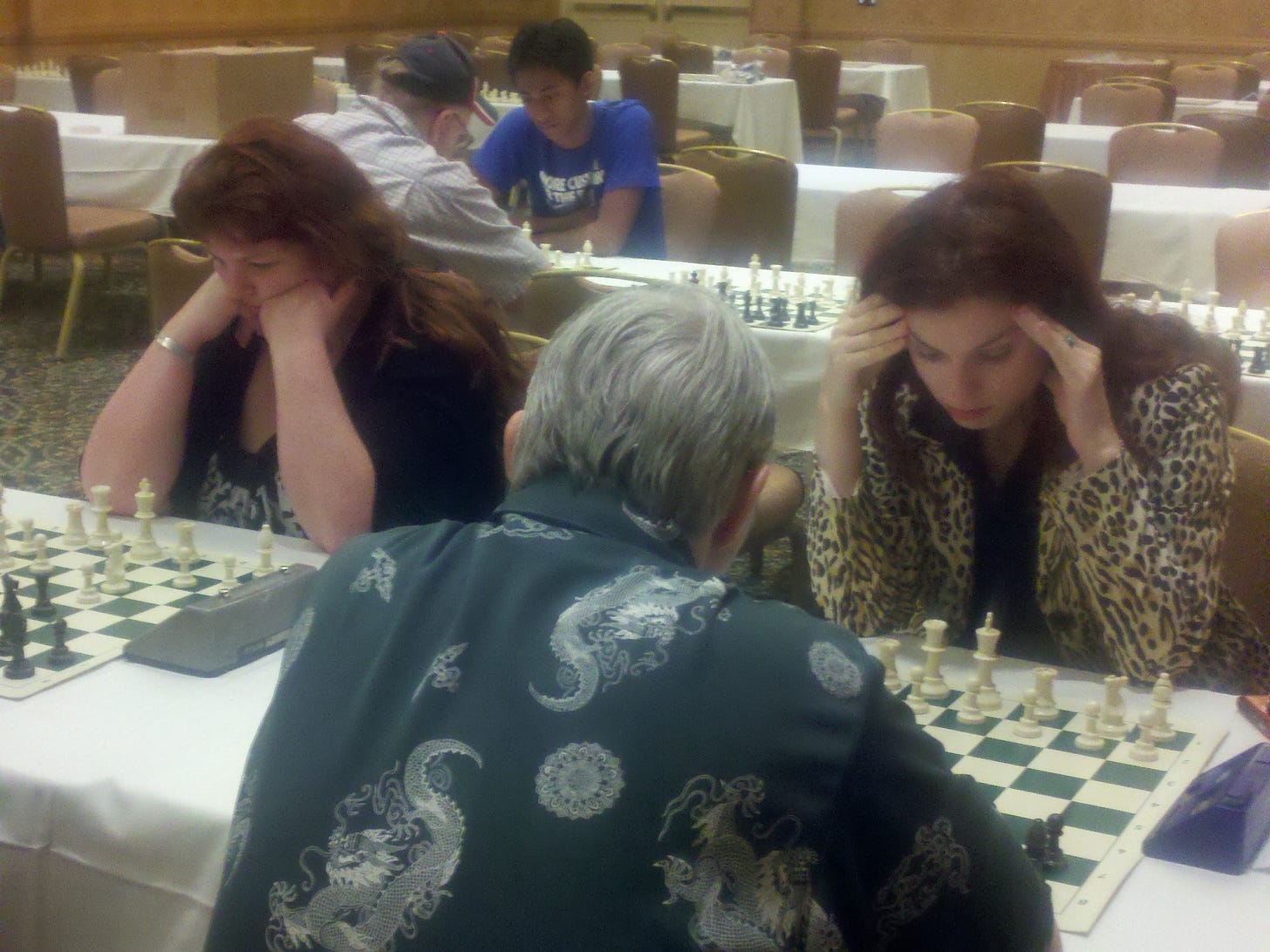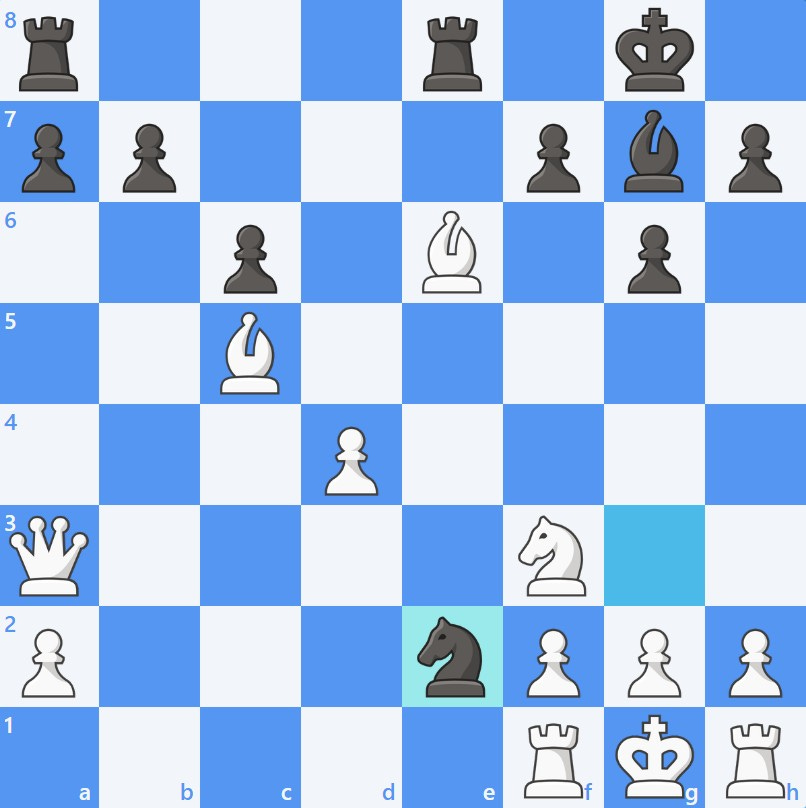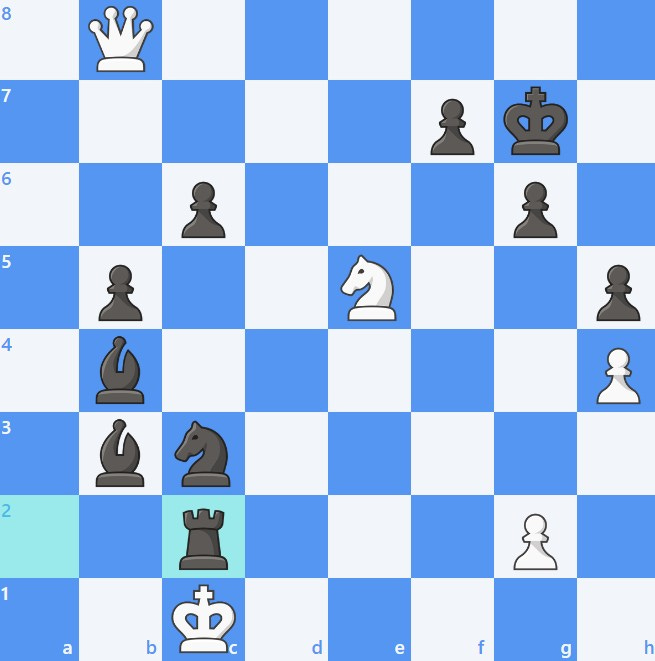Remixing Smothered Mate: From Fischer to Freestyle
An unusual pattern in two games, 70 years apart
Fischer Random Chess1, now widely known as Freestyle Chess is seeing the rapid surge in popularity that Bobby Fischer hoped for when he invented the variant in 1996 “to keep chess going.” One of my favorite things about Freestyle Chess is the miniatures. Shuffling the pieces on the back row creates unusual patterns, which leads to more short games. Like this one, which ended in a pretty mate, for Ukrainian Grandmaster Oleksandr Bortnyk, against French Super Grandmaster Maxime Vachier-Lagrave in chess.com’s Freestyle Friday series.
White Played 10. Qf3! forcing immediate resignation since ….Qxf3 allows Nxe7 checkmate. 10…Qxd1+ doesn’t help since 11.Kxd1 Nxa7 12. Nxe7 is still mate, with the queen eyeing the b7 square.
The even prettier Qf1 is a little less precise, but that checkmate deserves a diagram.
This gorgeous pattern is striking to someone like me, who has solved thousands of smothered mate tactics and shown hundreds to students. There’s even a chapter on it in my latest tactics book. Smothered mates almost always follow the classic script, with a king on h8, a rook or knight on g8, and a heroic Knight on f7.
A memorable exception, that mirrored the freestyle game immediately popped into my head. We have to go back 70 years though. To the Game of The Century.
In 1956, a 13-year-old Bobby Fischer faced Donald Byrne in a legendary game at the Rosenwald Memorial Tournament at the Marshall Chess Club.
In the position below, Fischer played one of my favorite moves. Can you find or remember it?
Fischer uncorked 17….Be6!! There are so many reasons that this move is tough to find. One being that the bishop already appears quite well poised on …g4. (see my earlier post on the difficulty humans have in finding backward moves.) Beyond that, there are so many pieces in take, and so much to calculate. As I pointed out in a recent broadcast, …Bxf3 is tempting—that’s a move I’m sure I’d look at, and would make it even less likely for me to find the historic bishop brilliancy.
As in chess games of all levels, some of the most beautiful lines didn’t appear on the board: they were in the variations. Like the line after …Be6 18. Bxe6? Qb5+! 19. Kg1 Ne2+ 20. Kf1 Ng3+ 21.Kg1 and here comes the hammer blow…. Qf1+!!
If Rxf1, Ne2 is mate!
That looks familiar doesn’t it?
While the game didn’t end in that particular mate as White played the more combative 18. Bxb6 after Be6, the finale was also beautiful. After all, it is the Game of the Century.
When asked about the game, Fischer was modest about the masterpiece "I just made the moves I thought were best. I was just lucky."
Pattern recognition is crucial to playing chess at a master level, but there’s nothing like seeing a familiar favorite in a new costume. Freestyle gives us a lot of that. As a chess and poker pro, a lot of people ask me whether Freestyle adds more randomness to the game. As I said in a conversation with Danny Rensch at the MIT Sports Conference, diverse is a better word than random. More diverse positions leads to more diverse patterns. And that’s something we can all get used to. Happy shuffling, on the chess board, the poker table, or the snack rotation2.

Also known as Chess 960, in reference to the 960 possible starting positions.
In a future post, I’ll share some things I don’t like about Freestyle Chess.











Agree on pattern recognition. Just hard to convince myself (and others) how much repetition it actually takes to ingrain patterns
I once played the classic smothered mate combination to produce Anastasia's mate after .. Qf1+ 2. Rxf1 Ne2+ 3. Kh2 Rh4. Though alas, only in someone else's post-mortem.